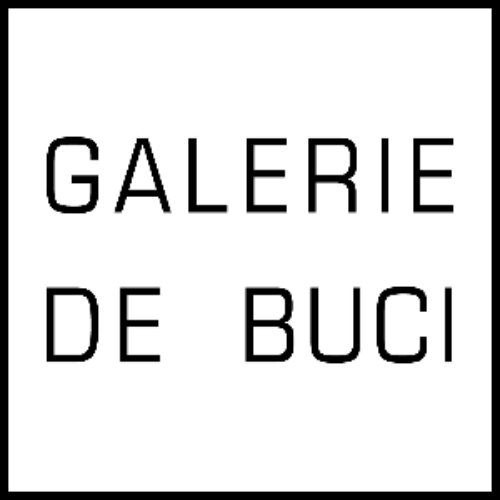Uzbekistan In Five Scenes
A Journey Through Heritage, Craft, and Change
Samarkand
Photo: Dave Proffer
In honor of Maxime Vardanian’s current exhibition, Personal Story, this week’s article explores the country that shaped his artistic vision. As his work takes center stage at the Galerie de Buci, it is impossible to separate his art from the landscapes, traditions, and history of his homeland. This piece delves into Uzbekistan, the place where Vardanian was born and continues to create.
Born in Uzbekistan, Vardanian’s vivid colors, textured surfaces, and layered compositions echo the visual richness of his homeland—a country that has long been a crossroads of culture, trade, and artistry. To understand his work, one must first step into Uzbekistan itself: a place where ancient cities whisper the secrets of the Silk Road, where the earth is both artist and witness, and where tradition and transformation coexist.
Samarkand: Jewel of the Silk Road
Samarkand, Uzbekistan’s second-largest city with a population of around half a million people, remains a cultural and economic hub shaped by its Silk Road legacy. Located in the Zeravshan Valley, it has been continuously inhabited for over 2,700 years, making it one of Central Asia’s oldest cities. Today, its population reflects the region’s diverse history, with Uzbeks, Tajiks, Russians, and other ethnic groups coexisting in a city where ancient traditions meet modern life. The city's heart is Registan Square, a landmark of Islamic architecture, where three grand madrasas—Ulugh Beg, Sher-Dor, and Tilya-Kori—stand as reminders of Samarkand’s past as a center of learning and trade. Beyond Registan, the Gur-e-Amir Mausoleum houses the tomb of Timur (Tamerlane), the conqueror who made Samarkand the capital of his empire in the 14th century. Another key site is the Shah-i-Zinda necropolis, a collection of intricately tiled mausoleums stretching back to the 11th century, often called an "open-air museum" of Islamic art. Samarkand is not just a city of monuments; it remains a thriving cultural center. Its markets sell traditional silk, ceramics, and spices, keeping the Silk Road spirit alive.

Registan square after sunrise in Samarkand, Uzbekistan
Photo: Ekrem Canli
Photo: Ekrem Canli
Silk and Spices Festival: A Celebration of Bukhara’s Traditions
Held annually in late May and early June, the Silk and Spices Festival in Bukhara is a vibrant celebration of the city’s deep-rooted connection to the Silk Road. Organized by Uzbektourism and the City of Bukhara, the festival aims to preserve and promote Uzbekistan’s rich cultural heritage. Artisans from across the country gather to showcase their crafts, including silk weaving, ceramic making, embroidery, carpet weaving, and metalwork, with visitors having the chance to observe and even participate in traditional workshops. The city’s bustling bazaars come alive with stalls selling handcrafted textiles, locally sourced spices, and intricate souvenirs that reflect Uzbekistan’s artisanal traditions. Alongside the marketplace, the festival features folk music performances, theatrical displays, and sporting events, creating an immersive cultural experience. One of the highlights is the closing ceremony at the Poi-Kalyan Architectural Ensemble, where musicians and dancers perform against the backdrop of one of Bukhara’s most famous landmarks. The festival alternates every other year with the International Festival of Gold Embroidery and Jewelry, further cementing Bukhara’s status as a hub of Uzbek craftsmanship. More than just a tourist attraction, the Silk and Spices Festival serves as a bridge between past and present, ensuring that the ancient traditions of the Silk Road continue to thrive in modern Uzbekistan.

Silk and Spice Festival in Bukhara
Photo: https://www.advantour.com/uzbekistan/festivals/silk-and-spices.htm
Photo: https://www.advantour.com/uzbekistan/festivals/silk-and-spices.htm
The Ceramic Art of Uzbekistan: A Tradition of Earth and Fire
Uzbekistan has a long and distinguished history of ceramic artistry, with techniques and styles passed down through generations. The country’s most famous center for pottery is Rishtan, a town in the Fergana Valley known for its signature blue-and-white ceramics, crafted using a unique local clay rich in minerals. These pieces, often decorated with floral and geometric patterns, are glazed with natural pigments derived from plant-based dyes, maintaining an eco-friendly, centuries-old tradition. Throughout Uzbekistan pottery remains an integral part of daily life, from decorative plates and vases to functional tableware found in every home. Many master potters run family workshops, offering visitors the chance to witness the meticulous process of shaping, painting, and firing the clay. Festivals and exhibitions frequently highlight this craftsmanship, ensuring that younger generations continue to learn and innovate within the art form.

Uzbekistan ceramic art
Photo: https://www.ceramicsnow.org/news/travel-to-the-heart-of-silk-road-pottery/
Photo: https://www.ceramicsnow.org/news/travel-to-the-heart-of-silk-road-pottery/
The Flavors of Uzbekistan: A Feast of History
Uzbek cuisine is a reflection of the country’s history as a Silk Road crossroads, blending Persian, Turkic, Russian, and Chinese influences into a rich and diverse culinary tradition. The most iconic dish is plov, a hearty rice dish cooked with lamb, carrots, onions, and spices, often prepared in massive quantities for special occasions and communal gatherings. Each region has its own variation, with ingredients and techniques passed down through generations. Other staples of Uzbek cuisine include shurpa (shurva or shorva), a soup made of large pieces of fatty meat, manti (steamed dumplings filled with meat or pumpkin), and lagman, a noodle soup with Central Asian and Chinese roots. Bread, or non, is central to every meal, baked in traditional clay ovens and often decorated with intricate patterns. Dairy products like kurt (dried cheese balls) and katyk (fermented milk) are widely consumed, especially in rural areas. Sweets such as halva and chak-chak (fried dough with honey) provide a sweet finish to meals, often accompanied by green or black tea, which is served throughout the day in every Uzbek household. Markets and bazaars across the country overflow with fresh produce, nuts, and spices, showcasing the abundance of local ingredients that define Uzbek flavors. Uzbek cuisine represents hospitality, family traditions, and the enduring influence of the Silk Road on Central Asian culture.

Popular Uzbek Dishes
Photo: https://www.advantour.com/uzbekistan/dishes.htm
Photo: https://www.advantour.com/uzbekistan/dishes.htm
The Aral Sea: A Desert Born of Catastrophe
Once one of the largest inland seas in the world, the Aral Sea has become one of the most striking environmental disasters of the modern era. Located between Uzbekistan and Kazakhstan, the sea began shrinking in the 1960s when Soviet irrigation projects diverted its waters to support large-scale cotton farming. Over the decades, what was once a thriving ecosystem turned into an arid desert, leaving abandoned fishing villages and rusting ships stranded in the sand. Once home to a prosperous fishing industry, the region’s economy collapsed as water levels dropped, leading to widespread unemployment and migration. The disappearance of the Aral Sea also triggered serious public health crises, as the exposed seabed released toxic dust from agricultural chemicals, causing respiratory diseases and water contamination. Efforts to restore parts of the sea have seen some success, particularly in Kazakhstan, where dam projects have helped replenish certain areas. However, in Uzbekistan, much of the former seabed remains dry, with government initiatives now focused on tree-planting efforts to combat desertification. Despite its devastation, the region has gained new significance as an eerie, otherworldly landscape that attracts visitors seeking to witness the remnants of what was once a vast and vital body of water. The Aral Sea’s story is a stark reminder of the consequences of unsustainable environmental policies, standing as both a cautionary tale and a challenge for future restoration efforts.

Maxime Vardanian’s work is not just an expression of personal vision—it is a continuation of Uzbekistan’s artistic and historical dialogue. Whether through the luminous blues of Samarkand, the cracked textures of the Aral Sea, the tactile richness of ceramics, or the sensory depth of Uzbek cuisine, his art carries echoes of a homeland that is both ancient and ever-changing. Come to the Galerie de Buci to experience his art first hand, until March 1st1

Maxime Vardanian. Birthday Cake, 1989
Photo: Galerie de Buci
Photo: Galerie de Buci

